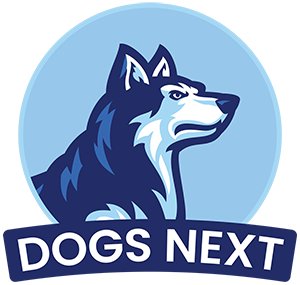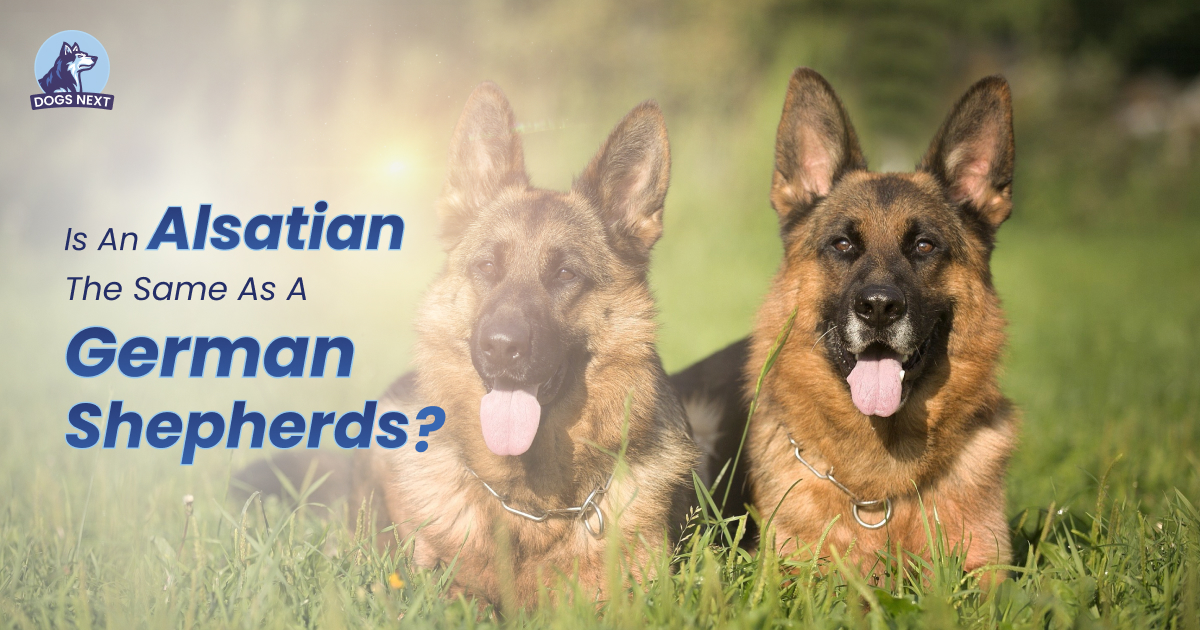Yes, an Alsatian the same as a German Shepherd. Are you confused about whether an Alsatian is the same as a German Shepherd? If so, you’re not alone. Many people use the terms interchangeably, but there are some key differences between the two breeds. In this article, we’ll explore the similarities and differences between Alsatians and German Shepherds to help you determine which breed may be the better fit for you.
We’ll discuss the origins and history of both breeds, their physical characteristics, temperament and personality traits, popularity, breed standards, and training and care requirements. By the end of this article, you’ll have a better understanding of these two beloved breeds and be better equipped to choose the right one for you. So let’s get started!
Is An Alsatian The Same As A German Shepherd? Exploring The Similarities And Differences
Discover the differences and similarities between Alsatians and German Shepherds. Learn whether an Alsatian is the same breed as a German Shepherd, and which breed may be the better fit for you.
A brief history on the German Shepherd
European breed standardization boomed in the 1850s. There was a strong belief that breeding dogs would enhance their ability to herd livestock and protect it from predators. The Phylax Society was founded in 1891 as a result of an increase in the popularity of local communities practicing this belief.
A dog breed standard was intended to be created across the country by the Phylax Society. A series of ongoing conflicts among members led to the dissolution of the society after only three years. A large following of members believed that dogs should be bred for their appearance as well as to work, although many others favored breeding dogs for working purposes alone.
They inspired people to standardize dog breeds independently despite being unable to unite their members. Former Berlin Veterinary College student Max von Stephanitz was one of those people. His party advocated the breeding of only working dogs, believing that no other purpose should be served by them.
After he purchased Horand von Grafarth at a dog show in 1899, Von Stephanitz named him Horand von Stephanitz. The traits that he thought made Horand the perfect working dog were his strength, intelligence, and loyalty. First-ever registered German Shepherd dog was Horand von Grafarth, who came into the world with Von Stephanitz’ Verein für Deutsche Schäferhunde.
It is because German Shepherds were primarily used for working as sheep dogs and to protect farmer’s livestock that they were named as such. The popularity of this breed has risen and fallen since the 1920s, and its traits of loyalty and intelligence make it an ideal pet. In 2009, the breed was ranked as the second most popular dog in the United States after dropping in popularity after World War II due to anti-German sentiment.
Physical Appearance and Characteristics:
Both the Alsatian and German Shepherd breeds share a similar physical appearance, as they are closely related breeds. They are both large dogs with a muscular build and a strong, athletic frame.
The German Shepherd breed typically weighs between 50-90 pounds and stands 22-26 inches tall at the shoulder. They have a distinctive appearance with a long, straight back, pointed ears, and a bushy tail. German Shepherds have a double coat that is typically black and tan, although they can also come in other colors such as sable, black, and white.
The Alsatian breed, on the other hand, is not an officially recognized breed and is often used to describe dogs that are bred to look like the German Shepherd but are not necessarily purebred. They typically have a similar appearance to German Shepherds, but may have a slightly different coat color or texture.
Key Differences or Similarities:
One key difference between the two breeds is that the Alsatian is not an officially recognized breed, whereas the German Shepherd is recognized by most major kennel clubs. This means that there may be more variation in appearance and temperament among Alsatians than there is among German Shepherds.
In terms of physical appearance, both breeds are quite similar and share many of the same characteristics. They both have a strong, athletic build and a distinctive appearance with pointed ears and a bushy tail. The biggest difference may be in coat color, as German Shepherds are typically black and tan, while Alsatians may come in a wider range of colors.
Temperament and Personality Traits:
Both the Alsatian and German Shepherd breeds are known for their intelligence, loyalty, and trainability. They are often used as working dogs, as they are highly adaptable and can be trained to perform a wide variety of tasks.
German Shepherds are known for their courage and protective instincts, and are often used as police and military dogs. They are also loyal and affectionate with their families, but may be wary of strangers.
Alsatians, on the other hand, may have a slightly different temperament depending on their breeding. They are often used as family pets and are known for their intelligence and trainability. However, they may also have a more independent streak than German Shepherds and may not be as protective.
Overall, both breeds are intelligent, loyal, and versatile dogs that make excellent pets and working dogs. The key differences between the two breeds may come down to variations in coat color and temperament, but both breeds share many of the same physical and personality traits.
Popularity of Both Breeds:
The German Shepherd is one of the most popular dog breeds in the world, consistently ranking in the top 10 most registered breeds with major kennel clubs. They are a versatile breed that excels in a wide variety of tasks, from herding and protection work to search and rescue and police and military work.
The Alsatian, on the other hand, is not an officially recognized breed and is not as popular as the German Shepherd. However, dogs that are bred to look like the German Shepherd but are not necessarily purebred are sometimes referred to as Alsatians.
Breed Standards for Both Breeds:
The German Shepherd breed standard is set by the International German Shepherd Dog Federation (IGSDF) and is recognized by most major kennel clubs, including the American Kennel Club (AKC). According to the IGSDF standard, German Shepherds should be well-balanced dogs with a strong, muscular body and a distinctive, wolf-like appearance. They should be intelligent, confident, and courageous, with a loyal and protective temperament.
The Alsatian does not have an official breed standard, as it is not an officially recognized breed. However, dogs that are bred to look like the German Shepherd may be judged according to the German Shepherd breed standard if they are entered in dog shows.
Comparing and Contrasting the Breed Standards:
Overall, the breed standards for the German Shepherd and the Alsatian are quite similar, as the two breeds share a similar physical appearance and temperament. However, there may be some variation in the breed standards depending on the specific kennel club or organization that is setting the standard.
One key difference between the two breeds is that the German Shepherd has an official breed standard that is recognized by most major kennel clubs, while the Alsatian does not. This means that there may be more variation in appearance and temperament among Alsatians than there is among German Shepherds.
In terms of physical appearance, both breeds should have a well-balanced, muscular body and a distinctive, wolf-like appearance. They should be intelligent, confident, and loyal, with a protective temperament. However, there may be some differences in coat color or texture between individual dogs.
Overall, both the German Shepherd and the Alsatian are highly regarded breeds that are known for their intelligence, loyalty, and versatility. While the German Shepherd has an official breed standard that is recognized by most major kennel clubs, the Alsatian may be judged according to the German Shepherd standard if entered in dog shows.
Training and Care Requirements for Both Breeds:
Both the German Shepherd and the Alsatian are intelligent and highly trainable breeds that require consistent training and socialization from a young age. They are also active and energetic dogs that require regular exercise and mental stimulation to stay healthy and happy.
In terms of care, both breeds require regular grooming to maintain their thick, double coats. They should be brushed at least once a week to remove loose hair and prevent matting, and they may need more frequent brushing during shedding season. Both breeds are also prone to certain health issues, such as hip dysplasia and bloat, so it is important to monitor their health and provide them with regular veterinary care.
Key Differences in Training and Care:
One key difference between the two breeds in terms of training and care is their level of activity and exercise needs. While both breeds require regular exercise and mental stimulation, the Alsatian may be slightly less active than the German Shepherd and may be better suited to a more relaxed home environment.
Another difference is in their trainability. German Shepherds are highly trainable and often used in police and military work, while Alsatians may be less predictable due to their less regulated breeding history.
In terms of grooming, Alsatians may have a longer and fluffier coat than German Shepherds, which may require more frequent grooming to prevent matting and keep the coat healthy.
Overall, both breeds require similar levels of training and care, but there may be some individual differences depending on the specific dog and its breeding history. It is important to research and understand the specific needs of each breed before bringing one into your home.
What differentiates the Alsatian from the German Shepherd Dog?
key differences and similarities between Alsatians and German Shepherds:
| Alsatian | German Shepherd | |
| Physical Appearance | Fluffy Coat | Double Coat |
| Floppy Ears | Erect Ears | |
| Leaner Build | More Muscular Build | |
| Temperament | Loyal and Protective | Loyal and Protective |
| Less Predictable | More Predictable due to breeding | |
| Independent | Highly Trainable | |
| Exercise Needs | Moderate to High | High |
| Trainability | Less Predictable | Highly Trainable |
| Grooming Needs | Regular Brushing | Regular Brushing |
| More Frequent Grooming for Longer Coat | ||
| Health Issues | Prone to Hip Dysplasia and Bloat | Prone to Hip Dysplasia and Bloat |
Overall, the two breeds share many similarities in terms of their physical appearance, temperament, and health issues. However, there are some key differences to consider, such as the Alsatian’s fluffier coat and less predictable temperament compared to the highly trainable German Shepherd. When choosing between the two breeds, it’s important to consider your lifestyle and individual preferences, as well as the specific needs of the dog.
Frequently Asked Questions
Q: What is a British Alsatian dog called in America?
Ans: The breed was introduced to the United States in the early 1900s, and it was formally recognized by the American Kennel Club in 1908. The German Shepherd dog was known as the Alsatian in the United Kingdom from 1919 to 1977.
Q: Which dog breeds are also known as Alsatians?
Ans: The German Shepherd or Alsatian is a German breed of working dog of medium to large size. The breed was developed by Max von Stephanitz using various traditional German herding dogs from 1899
Q: Are Alsatians bigger than German Shepherds?
Ans: Some dog lovers claim that the Alsatian is a different dog to the German Shepherd in size, build and colour, while some stress they originate from different places. Here’s where we can straighten it out for you and confirm that in short, they are the same dog. The Alsatian is the same dog as a German Shepherd.
Conclusions
In conclusion, an Alsatian the same as a German Shepherd and are essentially the same breed of dog. The name “Alsatian” was used in the UK after World War I due to anti-German sentiment, but the breed is officially recognized as the German Shepherd around the world. Regardless of the name, this breed is known for its intelligence, loyalty, and versatility in tasks such as police and military work, search and rescue, and as a family companion.
So whether you call them Alsatians or German Shepherds, these dogs remain one of the most popular and beloved breeds in the world.

I’m David, an expert contributor and writer, with two furry friends of my own, I know the challenges of raising and caring for dogs. From training to nutrition and health, my goal is to provide valuable insights and advice to help create strong bonds and happy, healthy lives. Find me in Twitter.




